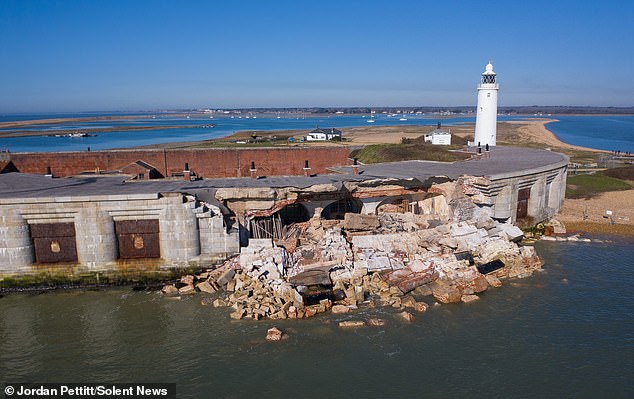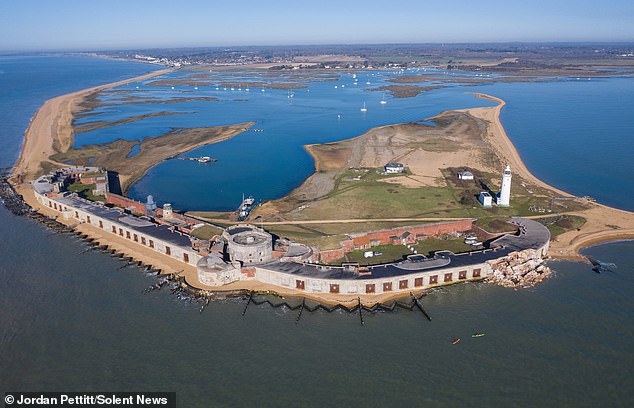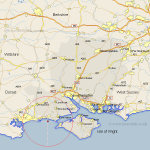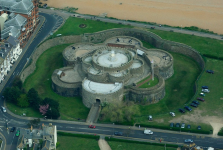East wing of Henry VIII's Hurst Castle collapses into the sea after being battered by heavy seas one week before work was due to begin to strengthen its defences
By Shari Miller For Mailonline28 Feb 2021
A section of a 16th Century castle built by Henry VIII dramatically collapsed into the sea following bad weather, just days before remedial work was due to start.
Part of the east wing of Hurst Castle near Milford-on-Sea, Lymington, Hampshire, crumbled away on Friday after the sea weakened its foundations, according to English Heritage, which owns the historic tourist spot.
The incident occurred just days before planned works to stabilise the foundations.
In 2019, English Heritage spent £750,000 to shore up the foundations of the castle's west wing and restore its sea defences, the BBC reports.
However, experts had thought the deterioration was slow moving and that the east wing was affected similarly.
A spokesperson for the charity said 'until the storm of 23 February, there were no signs of any major structural problems.'

The incident occurred just days before remedial works were due to start at the historic site

The damage occured to the east wing wall of the castle, which was built by Henry VIII
Engineers are now assessing the damage to the 573-year-old building and are planning remedial works.
The site was not open to the public at the time of the collapse and there are no reports of any injuries.
When Hurst Castle was originally built between 1541 and 1544 as a defence against France at the narrow entrance to the Solent, it was considered one of the most advanced artillery fortresses in England.
A century later, it was being used as a prison for eminent 17th century captives, including Charles I.
During the 18th century, Hurst Castle was still in use but fell into disrepair, with its coastal spit often frequented by smugglers.
It was later strengthened during the 19th and 20th centuries and played a crucial role in defending the western Solent during invasion threats, from the Napoleonic Wars to the First and Second World Wars.
The site is also home to the Garrison Theatre, possibly the last surviving Entertainments National Service Association theatre, which was used to provide entertainment for armed forces during the Second World War.

Engineers are now assessing the damage to the 573-year-old building near Lymington, Hants
Hurst Castle through the centuries

When Henry VIII built Hurst Castle it was considered one of the most advanced fortresses of its time
Built by Henry VIII on the Hurst Spit in Hampshire between 1541 and 1544, the castle was intended to defend the Solent against the French and the Holy Roman Empire.
The early castle had a central keep, three bastions and by 1547 was equipped with 26 guns.
During the English Civil War, Charles I was detained here before his execution.
By 1660, Charles II was on the throne and as the castle had fallen into disrepair, he considered demolishing it, but instead it was turned into a military base.
Into the 17th and 18th centuries, Hurst Castle was used as a rendezvous for smugglers on the coast.
Repairs were undertaken ahead of the Napoleonic Wars in 1803 and the castle was modernised to enable it to hold more advanced 24-pounder and 32-pounder guns.
Hurst Castle formed part of the coastal defence network around the Solent during the First World War and Second World War.
In 1956, the fort was decomissioned and is today run by English Heritage and Hurst Marine.
Before the pandemic, the castle received around 40,000 visitors a year.

Henry VIII castle collapses into sea as it is battered by storms
The east wing of historic Hurst Castle near Milford-on-Sea, Lymington, built by Hendy VIII dramatically crumbled away after the sea weakened its foundations following a story on Friday.

